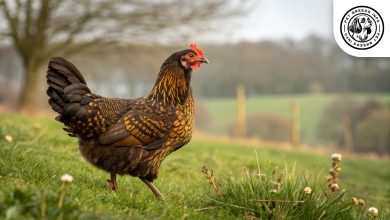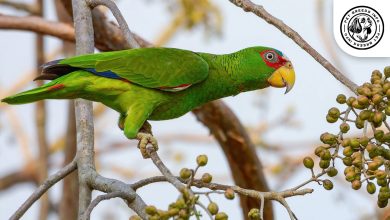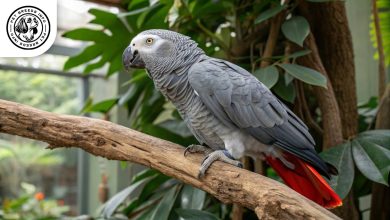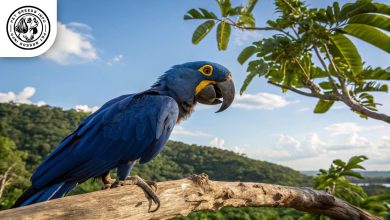Green-winged Pytilia Bird: Personality, Lifespan & Care
General Introduction of the Breed
The Green-winged Pytilia (Pytilia phoenicoptera) is a small yet strikingly beautiful bird belonging to the estrildid finch family. It is commonly found in sub-Saharan Africa, particularly in regions such as Senegal, Sudan, and Ghana. This bird is also known as the Red-billed Pytilia due to its distinct red beak.
The Green-winged Pytilia thrives in savannas, dry woodlands, and grasslands, where it lives in pairs or small flocks. Although it is not commonly kept as a pet, bird enthusiasts admire its vibrant plumage and active behavior.
Table of Contents
| Common Name | Green-winged Pytilia |
| Scientific Name | Pytilia phoenicoptera |
| Origin | Sub-Saharan Africa (Senegal, Sudan, Ghana) |
| Size | 12–13 cm (4.7–5.1 in) |
| Lifespan | 5–10 years |
| Colors | Green upper body, yellow-green wings, red-white barred underparts |
| Talking Ability | Very limited |
| Noise Level | Low to moderate |
| Social Behavior | Social with its kind, territorial during breeding |
Physical Characteristics
The Green-winged Pytilia is a small bird, measuring about 12–13 cm (4.7–5.1 inches) in length and weighing approximately 12–15 grams. Males and females have slight differences in appearance, with males displaying brighter colors.
This bird has a striking color pattern with grayish-green plumage on its upper body and bright yellow-green wings. Its underparts feature a beautiful mix of red and white barring. The beak is a vibrant red, and its eyes are dark and round.
The tail of the Green-winged Pytilia is relatively short, with a slight curve, enhancing its delicate and graceful appearance.
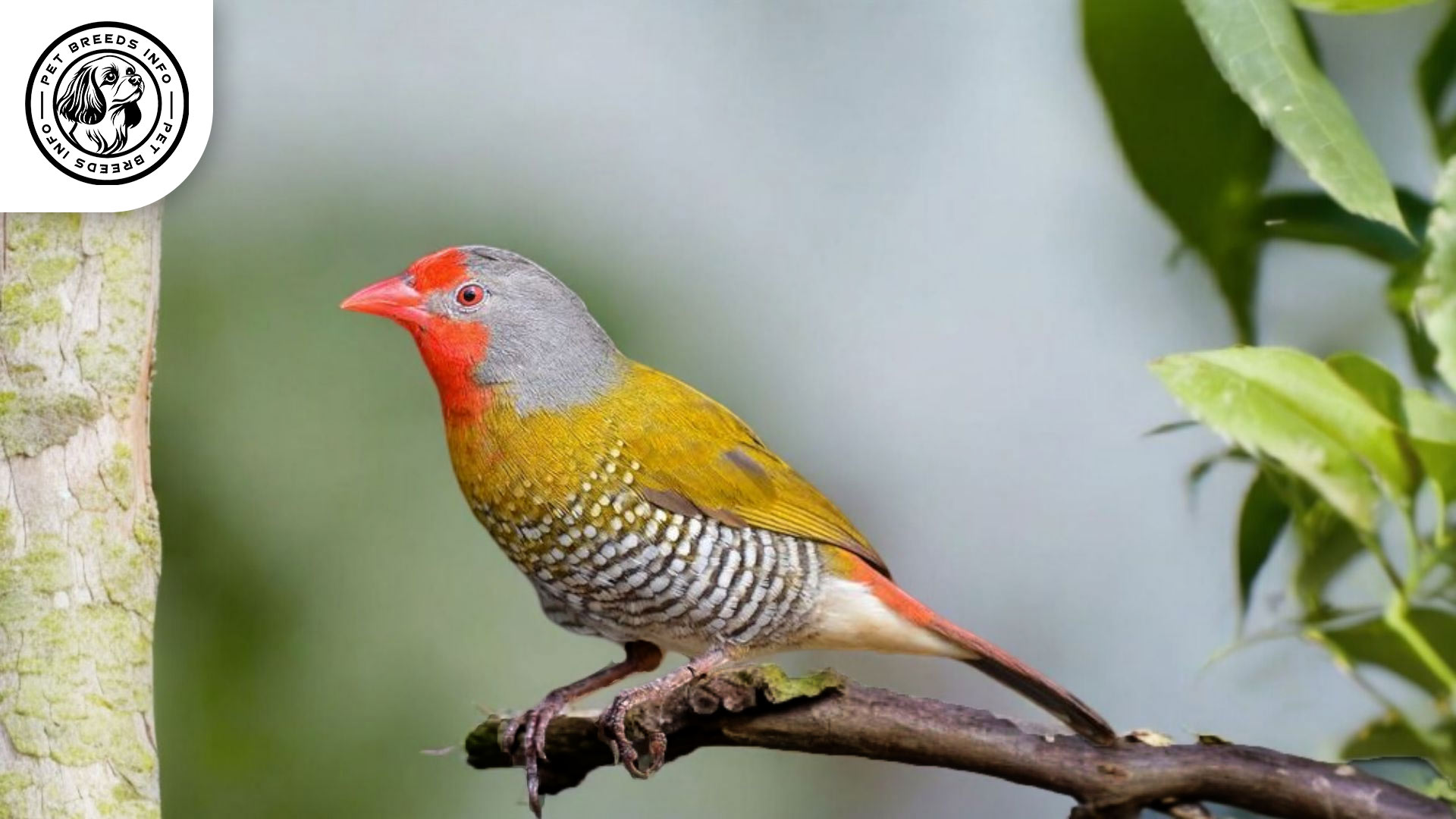
Personality and Temperament
The Green-winged Pytilia is a lively and energetic bird that enjoys interactive environments. It is intelligent and can recognize patterns, especially in feeding routines and territorial behaviors.
Though not commonly domesticated, it has a friendly nature and can adapt well to aviary life when kept with compatible bird species. This bird is generally social and forms strong bonds with its mate. However, it may show territorial instincts, particularly during breeding seasons.
It is relatively sensitive to environmental changes and prefers a stable, quiet place to thrive.
Care and Maintenance Requirements
The Green-winged Pytilia is an active bird that requires plenty of space for flying and exploration. A large aviary or spacious cage with natural perches and hiding spots is ideal.
It thrives best in warm environments and does not tolerate cold temperatures well. Proper ventilation and consistent humidity levels are essential for its well-being.
Read More: Ducorp’s Cockatoo Bird
Grooming needs are minimal but important. Regular cleaning of the cage, fresh water supply, and occasional misting for feather maintenance contribute to its overall health.
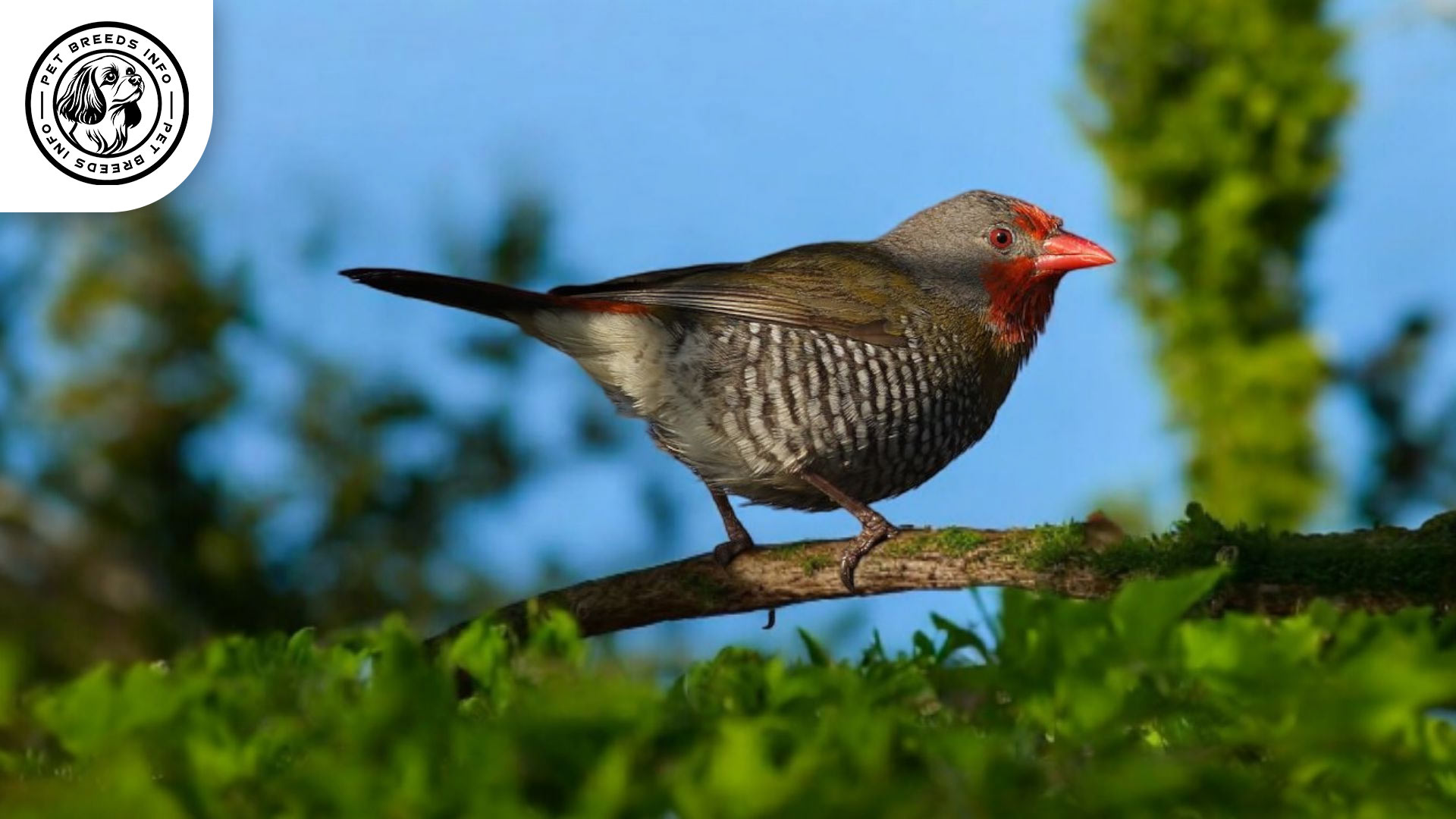
Diet and Nutrition
A balanced diet for the Green-winged Pytilia consists of high-quality finch seed mixes, fresh greens, and small insects such as mealworms to provide protein.
Fruits, such as apples, pears, and papayas, can be offered in moderation. However, foods such as avocado, chocolate, and caffeine should be strictly avoided as they are toxic to birds.
Daily fresh water is crucial, and grit or cuttlebones can be provided to help with digestion and calcium intake.
Health and Common Medical Issues
The Green-winged Pytilia is generally a hardy bird but is susceptible to common avian illnesses such as respiratory infections, mite infestations, and digestive issues.
Stress and poor diet can weaken its immune system, making it prone to disease. Regular veterinary check-ups, a clean living environment, and a nutritious diet help maintain its health.
Its average lifespan in captivity ranges between 5 to 10 years, depending on care and environmental factors.
Read More: Dutch Bantam Chicken
Training and Behavior Management
Though not traditionally a trainable bird, the Green-winged Pytilia can be conditioned to follow routines, especially concerning feeding schedules.
Early socialization with fellow birds leads to a calmer temperament. It can be encouraged to feel comfortable around caretakers through gentle and regular interaction.
Reinforcing a quiet and stable environment helps reduce unnecessary stress-related behaviors.
Interaction with Other Animals and Humans
This species is naturally social but prefers the company of its own kind. It thrives within communal aviaries with other finches and small, non-aggressive birds.
While it is not typically a hands-on pet, with patience, it can become accustomed to the presence of humans. However, it is not an ideal pet for households with large or predatory pets such as cats or dogs.
This bird is best suited for experienced bird owners or ornithologists who can provide proper care and monitoring.

Price and Availability
The Green-winged Pytilia is not as commonly sold as other finches, making its price vary considerably. Prices range from $50 to $150 depending on availability, breeder reputation, and location.
It is best to acquire this bird from reputable breeders who specialize in finches or avian rescue organizations. Ethical sourcing ensures the bird’s health and well-being.
Conclusion and Final Thoughts
The Green-winged Pytilia is a beautiful and fascinating bird that can be a great addition to an aviary setup. While it may not be the best choice for inexperienced bird owners, those with proper knowledge and resources will find it a joy to care for.
Read More: Goffin’s Cockatoo Bird
This bird thrives in spacious environments with a stable routine. Prospective owners should consider its dietary needs, sensitivity to stress, and need for social interaction before bringing one home.
If provided with proper care, attention, and the right living conditions, the Green-winged Pytilia can live a happy and healthy life while bringing vibrancy to its surroundings.
FAQ
Is the Green-winged Pytilia suitable for beginners?
No, it’s better suited for experienced bird owners due to its sensitivity and specific care needs.
Can the Green-winged Pytilia live with other birds?
Yes, it thrives with other small, non-aggressive finches in a communal aviary.
What does the Green-winged Pytilia eat?
Its diet includes high-quality finch seed mixes, fresh greens, fruits, and occasional insects like mealworms.
Does the Green-winged Pytilia talk like parrots?
No, it has very limited talking ability and mostly communicates with soft chirps.
How much does a Green-winged Pytilia cost?
Prices range from $50 to $150 depending on breeder reputation and location.


